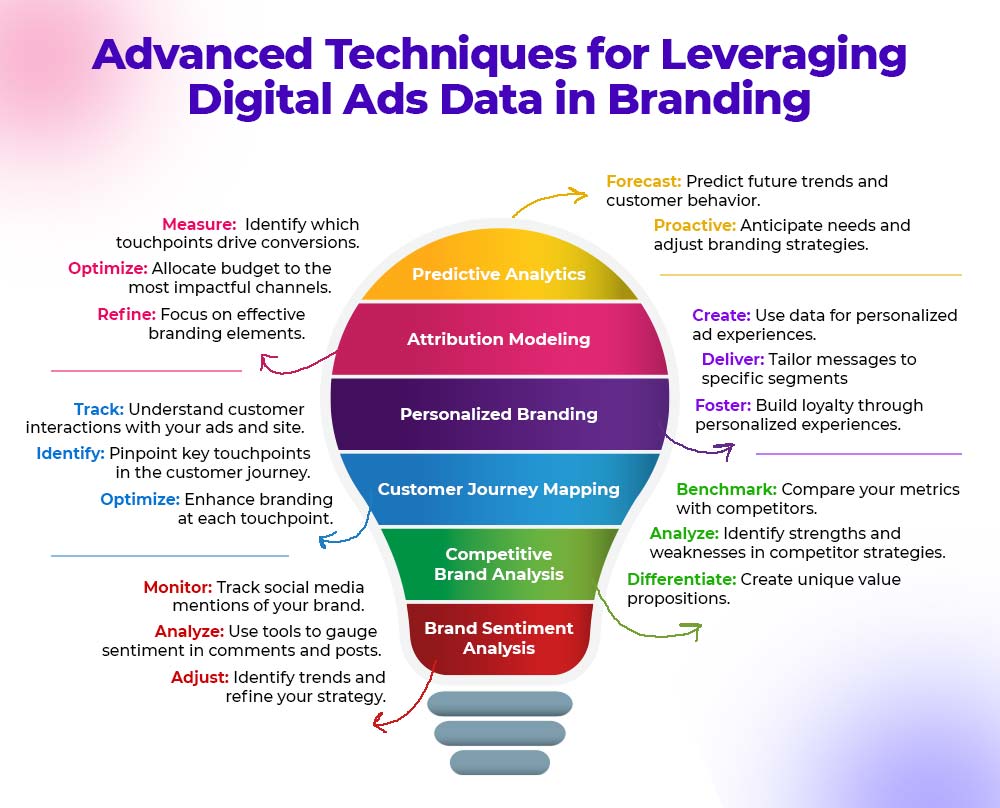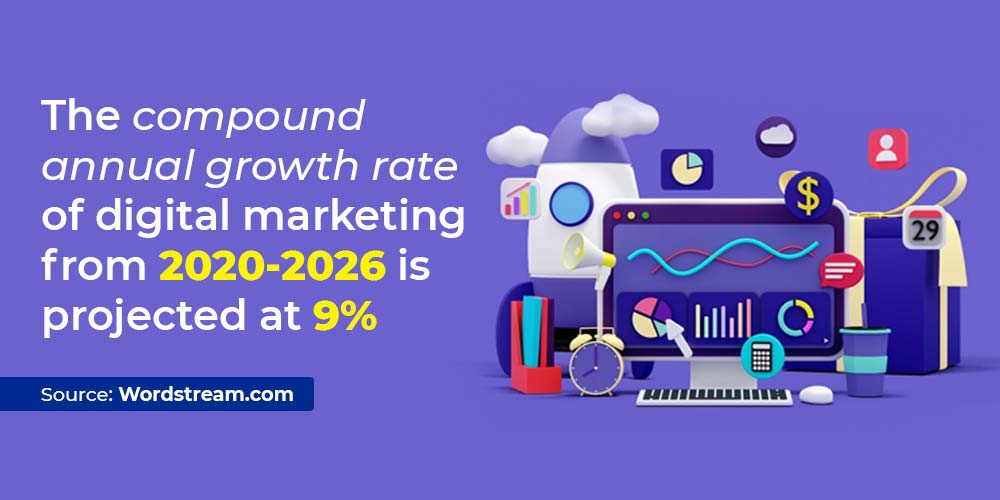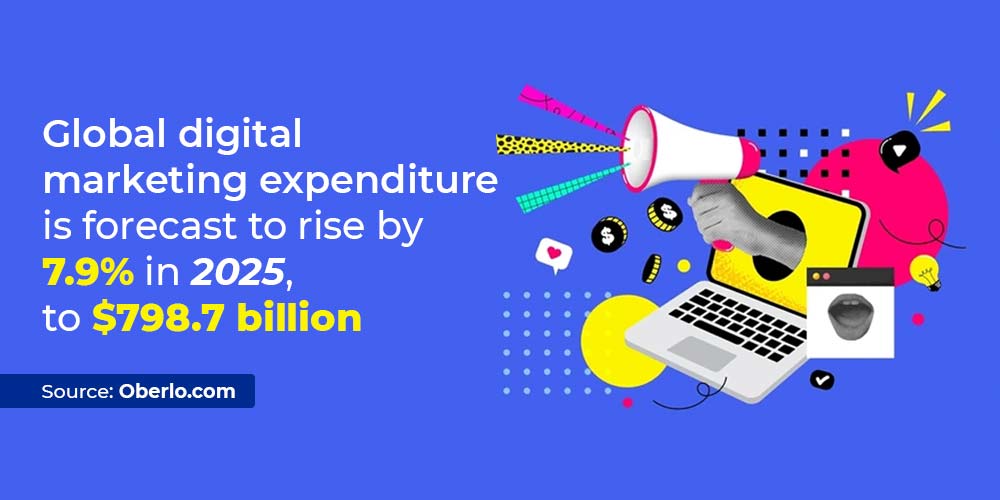Use Digital Ads Data to Improve Your Brand Story
In today’s digital landscape, crafting a compelling brand story isn’t just an art; it’s a science. The key to unlocking this science lies in your digital ads data. By analyzing and leveraging this data, you can refine your brand narrative, ensuring it resonates deeply with your audience and drives meaningful results. Here’s a step-by-step guide on how to use digital ads data to enhance your brand story, complete with advanced techniques to take your branding to the next level.
Start with Clear Objectives
Before delving into your digital ads data, establish clear objectives. Are you looking to boost brand awareness, drive sales, or position your brand as a leader in your industry? Your goals will shape how you interpret your data and guide your storytelling strategy.
For example, if your goal is to increase sales for a new product, your brand story should highlight how the product solves a specific problem for your audience. This targeted approach ensures your narrative is not only engaging but also effective in achieving your business objectives.


Analyze the Customer Journey using Digital Ads Data
Understanding the customer journey is crucial for creating a brand story that resonates at every touchpoint. Digital ads data offers invaluable insights into this journey, revealing how customers interact with your brand from the first click to the final conversion.
Customer Journey Mapping:
- Track: Monitor customer interactions with your ads and website.
- Identify: Pinpoint key touchpoints in the journey where your story needs to be most compelling.
- Optimize: Enhance branding at these touchpoints to ensure a seamless, engaging experience.
For instance, a company selling eco-friendly products might find that customers interested in sustainability are more likely to engage with content that highlights the company’s commitment to the environment. By weaving this theme throughout the customer journey, from initial ads to post-purchase follow-ups, the company can create a consistent and compelling brand narrative.
Leverage Google Ads Data for Deeper Insights
Google Ads provides a wealth of data that can help you understand what aspects of your brand story resonate with your audience. By analyzing which keywords and ads generate the most traffic and conversions, you can tailor your narrative to align with customer interests.
Advanced Techniques:
- Brand Sentiment Analysis:
- Monitor: Track social media mentions of your brand.
- Analyze: Use tools to gauge sentiment in comments and posts.
- Adjust: Identify trends and refine your strategy to reflect customer sentiment.
For example, if ads targeting the keyword “affordable luxury” are driving significant traffic, your brand story should emphasize the balance of quality and affordability. This insight allows you to align your narrative with what your audience values most, increasing the effectiveness of your branding efforts.
Competitive Brand Analysis
To ensure your brand story stands out, it’s essential to understand where you stand relative to your competitors. By analyzing competitor strategies and performance, you can identify opportunities to differentiate your brand.
Advanced Techniques:
- Benchmark: Compare your metrics with those of your competitors.
- Analyze: Identify strengths and weaknesses in competitor strategies.
- Differentiate: Develop unique value propositions that set your brand apart.
For example, if a competitor’s brand story heavily emphasizes innovation, you might choose to focus on the human aspect of your brand, such as exceptional customer service or community involvement, to offer a unique perspective that appeals to your audience.
Highlight Top-Performing Content
Not all content resonates equally with your audience. By identifying which landing pages, blog posts, or ad creatives drive the most engagement, you can focus on the aspects of your brand story that are most effective.
For instance, if a landing page featuring customer testimonials has a high conversion rate, this suggests that social proof is a powerful element of your brand story. You can then integrate more testimonials into your marketing materials to build trust and credibility with your audience.
Personalized Branding:
- Create: Use data to craft personalized ad experiences.
- Deliver: Tailor messages to specific audience segments.
- Foster: Build loyalty by creating personalized brand experiences that resonate with individual customers.
Imagine a tech company that discovers its landing page, which highlights user success stories, is its top performer. This insight suggests that prospective customers value real-world examples of how the product has benefited others. By amplifying this narrative across its website and marketing campaigns, the company can create a stronger, more relatable brand story.


Utilize Attribution Modeling
Understanding which touchpoints are most effective in driving conversions is key to optimizing your brand story. Attribution modeling allows you to allocate resources to the channels and content that have the greatest impact.
Also Read about our blog :
Unlocking the Power of Predictive Analytics with Google Analytics Data
Advanced Techniques:
- Measure: Identify which touchpoints contribute most to conversions.
- Optimize: Allocate your budget to the most impactful channels.
- Refine: Focus on the branding elements that are most effective in driving conversions.
For instance, if your attribution model shows that a particular ad campaign drives a significant portion of your conversions, you might decide to invest more in that campaign and replicate its success across other channels.
Embrace Predictive Analytics
Predictive analytics can help you anticipate future trends and customer behaviors, allowing you to stay ahead of the curve with your brand story.
Advanced Techniques:
- Forecast: Use predictive analytics to anticipate future trends and customer needs.
- Proactive: Adjust your branding strategies in advance to align with these predictions, ensuring your brand remains relevant and compelling.
For example, if your data suggests a growing interest in sustainability, you can start integrating eco-friendly initiatives into your brand story before the trend becomes mainstream, positioning your brand as a leader in the space.
Measure Success Beyond RoAS
While Return on Ad Spend (RoAS) is a crucial metric, it’s not the only indicator of success. To fully understand how well your brand story is performing, consider tracking other key performance indicators (KPIs) like conversion rates, customer acquisition cost, and brand awareness.
For example, a brand might find that while their RoAS is high, their customer retention rate is low. This could indicate that while their brand story attracts initial interest, it doesn’t foster long-term loyalty. By analyzing additional metrics, the brand can identify areas for improvement and adjust their narrative to build deeper, more lasting connections with customers.
Evolve Your Brand Story with Data
Your brand story should be dynamic, evolving as you gather more data and insights. Regularly reviewing your digital ads data will help you identify trends and shifts in audience behavior, allowing you to adjust your story to stay relevant.
For instance, a tech company might notice a growing interest in sustainability among its audience. By incorporating eco-friendly initiatives and sustainable practices into their brand story, the company can stay ahead of the curve and continue to engage its audience effectively.


The Bigger Picture: The Future of Digital Marketing
As digital marketing continues to grow, the importance of leveraging data to craft your brand story will only increase. According to a report by Oberlo.com, global digital marketing expenditure is expected to rise by 7.9% in 2025, reaching $798.7 billion. Furthermore, the compound annual growth rate (CAGR) of digital marketing from 2020 to 2026 is projected at 9%.
These statistics underscore the importance of staying ahead of the curve. By continuously analyzing your digital ads data and refining your brand story, you can ensure that your brand remains competitive in an increasingly crowded marketplace.
By integrating advanced techniques such as brand sentiment analysis, competitive brand analysis, and predictive analytics, you can take your brand story to the next level. Remember, your brand story isn’t static—it should evolve alongside your audience’s needs and preferences, guided by the rich insights provided by your digital ads data.
This approach ensures that your brand remains relevant, compelling, and capable of forging deep connections with your audience in an ever-changing digital landscape.







